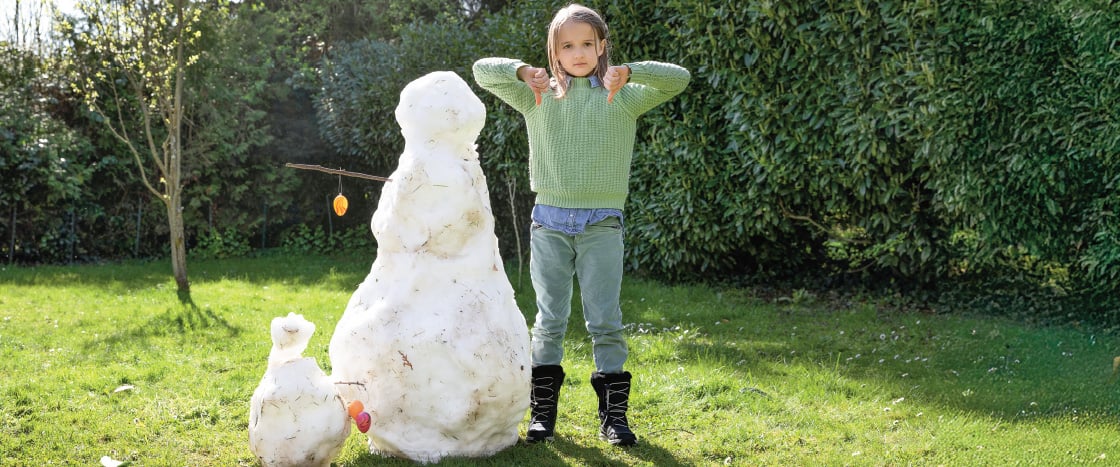You’re curled up in your cozy bed one winter morning. It’s time to get ready for school. But before you start to get dressed, you peek out your window. Thick snow blankets the ground. That’s when you get the good news. It’s a snow day!
For students in some parts of the U.S., this is a familiar winter experience. When snowfall makes roads dangerous, schools sometimes close. Kids have a day off to play outside or sip hot chocolate in their PJs. But recently, the chances of having a snow day seem to be melting away.
Snow days happen only under special conditions. The temperature in the clouds must drop to 32° Fahrenheit (0° Celsius) or below. That’s water’s freezing point, the temperature at which it turns from liquid to solid. At this temperature, the water particles in clouds freeze into tiny crystals that clump together. When these clumps become too heavy, they fall to the ground as snowflakes.
But snowflakes won’t pile up unless ground temperatures are below freezing too. If it’s too warm, the ice crystals will quickly melt.
The conditions for heavy snow are becoming rarer. Scientist Brian Brettschneider studies Earth’s climate, or average weather patterns. He analyzed snowfall in the 48 U.S. states besides Alaska and Hawaii over the past 50 years. He found that, as temperatures have warmed, yearly snowfall totals have decreased.
Less snow means fewer chances for snow days. So if you are lucky enough to get one this winter, make the most of it!
It’s a cold winter morning. You’re curled up in your cozy bed. It’s time to get ready for school. You peek out your window. Thick snow covers the ground. That’s when you get the good news. It’s a snow day!
Many students in the U.S. live in areas where this happens. Snowfall can make roads dangerous. So schools sometimes close. Kids have a day off. They can play outside. Or they can sip hot chocolate in their PJs. But the chances of having a snow day seem to be melting away.
Snow days happen only when the weather is just right. The temperature in clouds must drop to 32° Fahrenheit (0° Celsius) or below. That’s water’s freezing point. It’s when water turns from liquid to solid. The water particles in clouds freeze into tiny crystals. They clump together. These clumps get heavy. Then they fall to the ground as snowflakes.
But there’s only one way snowflakes will pile up. The air near the ground has to be freezing too. The ice crystals will quickly melt if it’s too warm.
The conditions for heavy snow are becoming rarer. Brian Brettschneider is a scientist. He studies Earth’s climate. That’s the average weather patterns. He studied snowfall in 48 U.S. states. That’s all but Alaska and Hawaii. He found that temperatures have warmed over the past 50 years. And total yearly snowfall has become less.
Less snow means fewer chances for snow days. Still, you might be lucky enough to get one this winter. If so, make the most of it!

